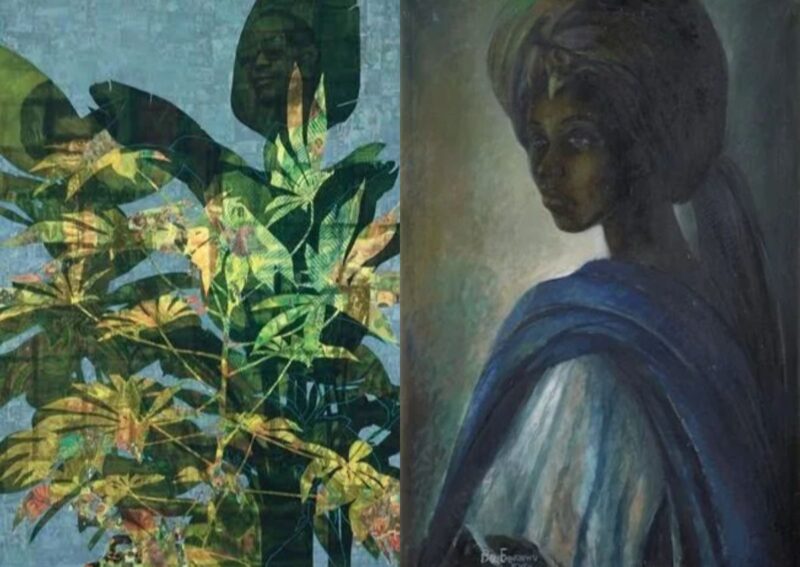
You know that feeling when you’re dragged to a gallery date and spend half the time pretending to understand a painting while secretly counting down to when you guys can go and get food so you can properly hang out? It happens. Most people think art requires some kind of deep knowledge to grasp. It doesn’t.
Art isn’t a puzzle you’re meant to solve; it’s supposed to be an experience. You just need curiosity, a bit of patience, and the willingness to actually look. Once you stop trying to get it, you’ll start noticing why people fall in love with it. Here’s how:
Look Before You Judge
The first thing to do when you stand in front of an artwork is to look. Really look. Ask yourself what the artist might be trying to say. Maybe it’s a story, an emotion, or just a clever play of colour and shape. Sometimes, the piece exists simply because the artist wanted to experiment or fill space. That’s fine too. Not every work has a hidden message waiting to be decoded.
When you’re honest with yourself about what you see, it becomes easier to connect. Maybe the piece feels chaotic, peaceful, or nostalgic. Whatever it stirs in you is valid. The point isn’t to arrive at the right answer; there isn’t one, but to notice your reaction.
Read Also: Anthony Azekwoh Is Painting the Internet’s New Favourite Wedding
The Critic Isn’t Always Right
Critics can be helpful, but they’re not sacred guides. Often, their interpretations sound detached from how real people experience art. The only context that might help is knowing a bit about the artist, who they were, what they were going through, and what era they lived in. That information can add texture, but it shouldn’t drown out your own view.
Appreciation starts with how the piece makes you feel. Is it visually interesting? Does it look like it took skill or patience? Does it pull something out of you, even confusion or irritation? That emotional spark is part of the point.
Go Where the Art Lives
If you want to build a genuine connection with art, you have to see it in person. Visit a gallery or museum and walk through with no pressure to understand anything. When a piece catches your attention, pause. Ask yourself what you like about it. If you’re with someone, talk about it. Compare what each of you sees.
If a piece doesn’t move you at all, that’s also worth thinking about. Why not? Is it too abstract? Too busy? Talking about what doesn’t work for you can be just as revealing as talking about what does.
Read a Little, But Only If You Want To
Some people like learning art terminology and styles because it gives them language for what they see. Words like ‘impressionist’ can help frame your observations. But this is optional. You don’t need a dictionary to appreciate a painting. What matters most is your willingness to engage.
Everything in Art Is Intentional
Every line, shape, and speck in an artwork is deliberate. Nothing is random. Take Njideka Akunyili Crosby’s Bush Babes, for example. At first glance, it’s just striking to look at. But when you pause, the leaves start to take shape as more than background.
Leaves/trees often mean growth and renewal, blue, calm and hope. Through those colours and the faces peeking from within, Njideka seems to be reaching for a vision of renewal and continuity for her people, a kind of rebirth. Or maybe it’s simply a beautiful arrangement of colour and texture. Both ways of seeing are valid.
That’s the beauty of art. The artist can have intentions, but your experience shapes what it becomes.
Notice the Details
When you’re stuck, start with what you can observe. Look at the size, a large canvas might be meant to overwhelm, while a smaller piece invites you closer. Notice shapes and lines; they guide your eyes toward what’s important. Follow the colours, which ones dominate, and which ones stand out? Ask yourself why. See if there’s movement, is there a sense of flow or tension in how the forms interact? These small details often tell more than the label on the wall.
Art Is Culture in Slow Motion
Every piece reflects its time and place. The colours, subjects, and techniques often respond to cultural conversations happening when it was made. You might see resistance, hope, wealth, or protest painted into the background. Sometimes it takes a quick Google search to catch that context, but once you do, it changes how you see everything else.
Stop Trying To “Get It”
The real trick to appreciating art is to stop trying to understand it like a puzzle. You don’t decode art, you experience it. Let it confuse you, bore you, surprise you, or move you. Let it do what it wants to do.
Next time you find yourself in a gallery, don’t stare at your phone waiting for the exit. Look around. Something there might not speak to everyone, but it might speak to you, and that’s enough.








